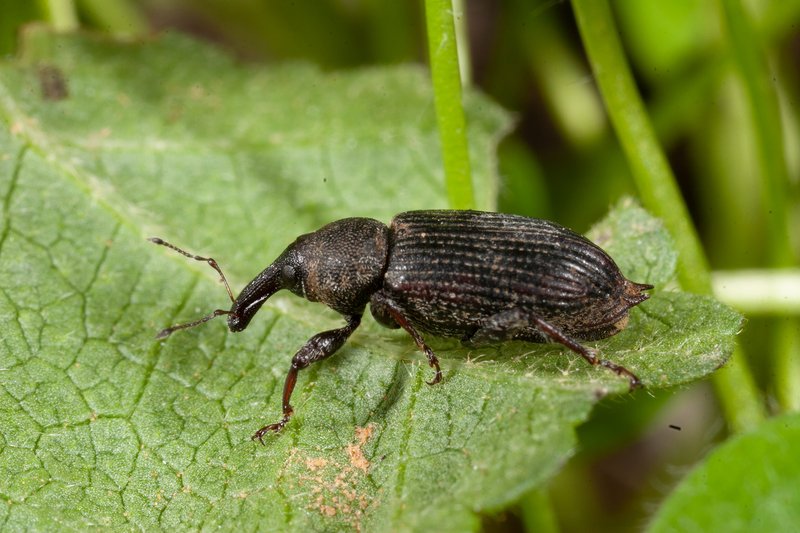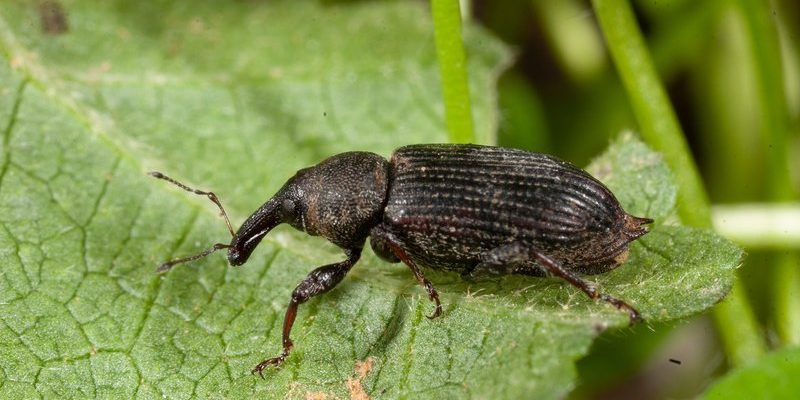
Think of weevils as tiny survivalists. They have an impressive knack for finding just the right spots to live, whether it’s in your pantry or in the wild. These little guys come from a large family of beetles known as Curculionidae. With thousands of species, each has its own little quirks and preferred living conditions. As we explore their habitats, we’ll also look at how weevils adapt to their surroundings—like tiny, armored ninjas, they’ve got tricks up their sleeves.
Understanding Weevil Habitats
Weevils are found in almost every corner of the globe. From tropical rainforests to dry deserts, these beetles are true adventurers. But what exactly do they call home? Well, weevils prefer places where they can find food and shelter.
Most commonly, you’ll spot them in agricultural settings, feasting on crops like grains, fruits, and vegetables. They love to hide away in stored products. Imagine a bag of rice sitting quietly on a kitchen shelf, which is just a buffet for a hungry weevil. Additionally, weevils can also be found in wood, where they lay their eggs. The larvae then munch through the wood, creating little tunnels.
Interestingly, some weevil species have adapted to live in specific environments. For example, the acorn weevil is known for its unique ability to thrive within oak trees, while the rice weevil attaches itself to stored grains. This adaptability is key to their survival.
Temperature and Moisture Preferences
Temperature and moisture play significant roles in determining where weevils can thrive. Most weevils enjoy warm, humid environments. They love areas where the temperature stays between 70°F and 90°F. Think about your cozy kitchen or a warm barn—perfect for these little critters!
Moisture is another important factor. Weevils tend to prefer environments with a higher humidity level. They are often more active in damp conditions because it helps keep their bodies hydrated. So, if you’ve ever found a weevil in a bag of flour that’s been sitting too long in a humid pantry, this could be the reason.
Without the right temperature and moisture, weevils struggle. Too cold or too dry, and they won’t thrive. That’s why they often invade homes as winter approaches, looking for warmth and food.
How Weevils Adapt to Their Environments
Weevils are not just survivors; they’re adaptors. Their ability to fit into different environments is truly impressive. So, how do they do it?
First, their physical features help them adapt. Many weevil species have elongated snouts that allow them to bore into food sources. This is a clever strategy for accessing their meals while hiding from predators. If you picture a little drill, that’s basically what their snout does!
Second, weevils have remarkable reproductive strategies. Some species can lay hundreds of eggs in a single place. This ensures that even if conditions aren’t ideal for some of the larvae, many will succeed in hatching and thriving. It’s like having a backup plan, ensuring their species continues.
Lastly, weevils can also modify their behavior based on their surroundings. For instance, if a particular food source runs low, they can easily move to another location, always on the hunt for the next meal.
Camouflage and Avoiding Predators
Another fascinating aspect of weevil adaptability is their camouflage. They often blend in with their surroundings, which protects them from predators. Their brown or grayish exoskeletons help them look like the branches, soil, or grains they inhabit. This is a survival tactic that many insects employ, but weevils do it exceptionally well.
Additionally, their small size makes it easy for them to hide in crevices or among food items. When you think about it, being small is a giant advantage! Weevils can sneak around unnoticed while searching for food or mates. This heightened awareness helps them dodge potential threats.
To top it off, some weevils can produce chemicals that deter predators. These chemicals make them taste bad or even toxic to those trying to snack on them. Talk about a clever way to stay safe!
The Impact of Weevils on Our Lives
While weevils may seem like just a nuisance, they play a significant role in their ecosystems. They help break down organic matter in decaying plants and wood. In doing so, they contribute to the nutrient cycle in various habitats.
However, when they invade homes, they can cause significant problems. Infestations in stored grains can lead to food spoilage, and nobody wants that. Imagine opening a bag of rice only to find it riddled with these pests. Yikes!
To combat these pesky invaders, it’s crucial to store food properly. Use airtight containers to keep them out, and always check for signs of infestation before purchasing grains or dried goods. Some proactive measures can save you from a kitchen disaster!
Controlling Weevil Populations
Controlling weevil populations is essential, especially in agricultural settings. Farmers often employ various strategies to keep these pests at bay. Some common methods include:
- Regular inspections: Keeping a close eye on stored grains and crops can help catch infestations early.
- Proper storage: Using sealed containers and maintaining a clean environment significantly reduces the chances of weevil infestations.
- Natural predators: Introducing natural predators can help keep weevil populations in check without harmful chemicals.
- Temperature control: Lowering temperatures in storage areas can deter weevils since they thrive in warmth.
By implementing these strategies, we can manage weevil populations and protect our food supplies effectively.
So, where do weevils live, and how do they adapt? These remarkable little beetles call many places home—from your pantry to the wild. Their ability to adapt is truly impressive, from their clever reproductive strategies to their fantastic camouflage skills.
Understanding weevils helps us appreciate the complexities of nature and highlights the importance of being proactive in managing our food. If you ever come across these tiny creatures, remember they’re just trying to survive, just like the rest of us. Being aware of them and taking simple preventative measures can keep our food safe and our homes weevil-free.

